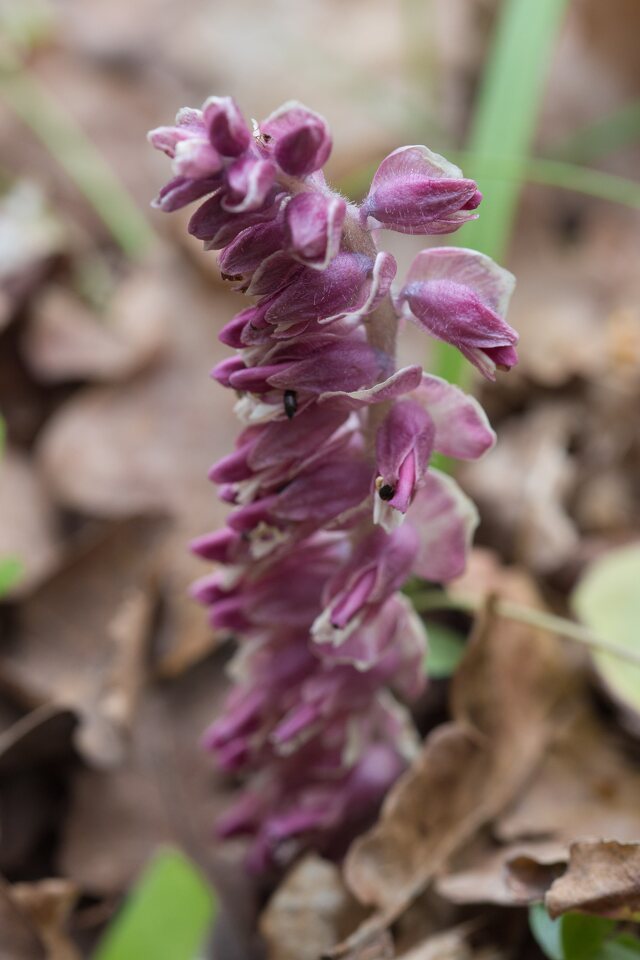
Lathraea squamaria · gegužinė žvynašaknė
- Gewöhnliche Schuppenwurz, Aufrechte Schuppenwurz
- common toothwort
- gegužinė žvynašaknė, gegužinė žvynšaknė
- sārtā bezlape
- łuskiewnik różowy
It is parasitic on the roots of hazel and alder, and occasionally other trees in shady places such as deciduous woodland and hedge sides. The plant consists of a branched whitish underground stem closely covered with thick, fleshy, colourless leaves, which are bent over so as to hide under the surface. The only portions that appear above ground in April to May are the short flower-bearing shoots, which bear a spike of two-lipped dull purple flowers, but is also able to produce cleistogamic underground flowers which fertilise themselves. It is also able to regenerate from broken fragments of the underground stem.
Tai daugiametis žolinis, parazitinis augalas, žvynuotu šakniastiebiu. Žydi balandžio - gegužės mėn, parazituoja dažniausiai lazdynus, dar alksnius, ąžuolus, skroblus. Apraizgo šeimininko šaknis, haustorijomis iš jų siurbia maisto medžiagas. Sėklos smulkios, su mėsingomis ataugėlėmis (elaiosomes). Jas platina skruzdėlės (myrmecochory) ir vanduo. Elaiosome lietuviškai sėklagūbris, čia keletas pavyzdžių.
‥
0 comments
Add a comment